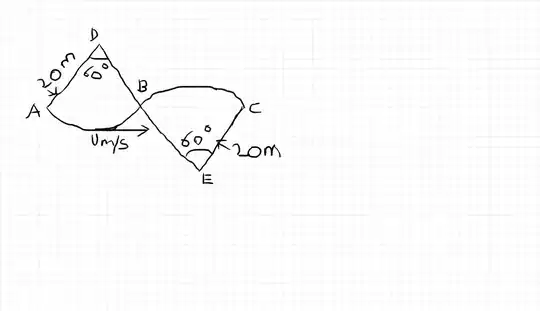
A toboggan travels along the path ABC shown in the diagram. The path lies in a vertical plane, and consists of two circular arcs $AB$ and $BC$. The line ABC is horizontal and there is no friction between the toboggan and the snow. Air resistance is negligible and the toboggan may be treated as a particle. The speed of the toboggan is at its lowest point is $U ms^{-1}$. Find the range of values of $U$ for which the toboggan will reach $C$ without losing contact with the snow.
I have absolutely no idea how to do this question. I spent about half an hour trying to figure out how to start. Finally did this: I found out the distance between the lowest point on the arc and the line AB and tried to equating the loss of gravitational potential energy with the gain on kinetic energy and used that to find the value of U as 7.32 (this was with the assumption that the speed of the particle as A was 0, which i'm pretty sure is a wrong assumption). Anyway, now i'm stuck and I have no idea what to do. Any help would be appreciated